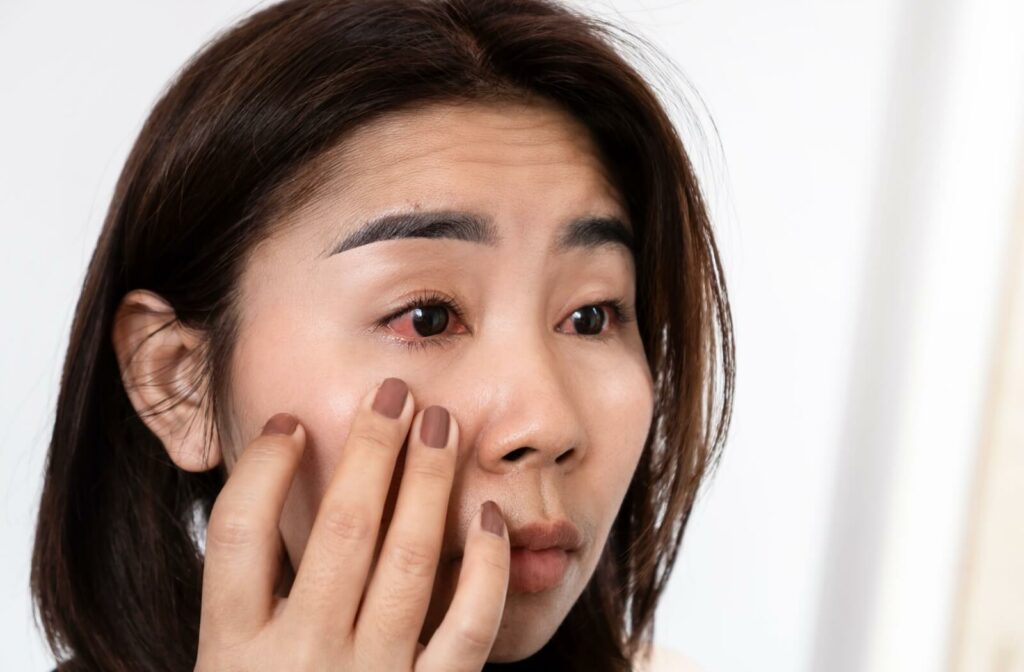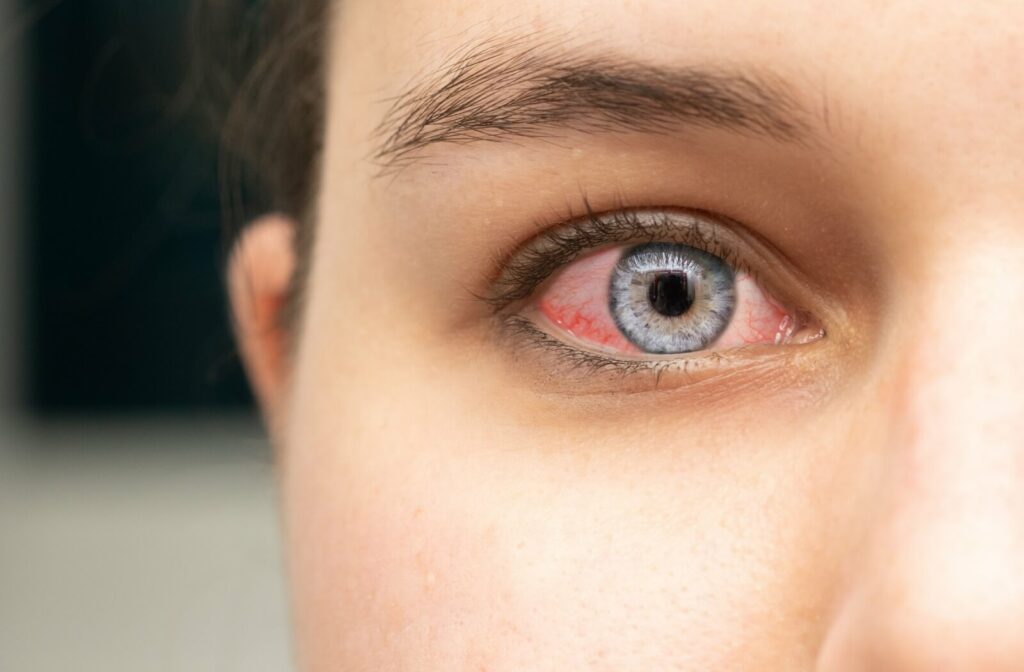Pink eye, also known as conjunctivitis, is a common eye condition that can result in redness and inflammation of the inner lining of the eyelid and the clear skin membrane that covers the white part of the eye (sclera). What doctors refer to as pink eye is often caused by a viral or bacterial infection in these tissues.
Viral conjunctivitis is more common in adults, and usually is associated with redness (caused by dilation of the small, superficial blood vessels of the eye), gritty or burning sensations, and watery discharge. Often people with viral conjunctivitis will have or have had a recent upper respiratory cold or fever. Symptoms can last from one to two weeks, and people are presumed contagious during that entire period.
Bacterial Conjunctivitis is more common in kids, and is associated with redness, yellow/green mucus discharge, and sticky eyelids/lashes especially upon waking in the morning. This type of infection usually responds well to certain topical antibiotic drops that can be prescribed by your optometrist.
There are other conditions that can present similar symptoms to pink eye, leading to misdiagnosis. Here are some of the most common conditions that are mistaken for pink eye:
- Allergic conjunctivitis
- Dry eye syndrome
- Eye strain or fatigue
- Blepharitis
- Contact Lens Irritation
Allergic Conjunctivitis
Allergic conjunctivitis is an allergic reaction that affects the eyes. It can be caused by allergens such as pollen, dust mites, and pet dander. The symptoms of allergic conjunctivitis include redness, itching, watering, and swelling of the eyes. These symptoms can easily be mistaken for pink eye.
One way to differentiate between allergic conjunctivitis and pink eye is by looking at seasonal allergy symptoms that a person may have. If they also have a runny nose, sneezing, or itchy throat in addition to their eye symptoms, then it’s more likely that they have allergic conjunctivitis.
Dry Eye Syndrome
Dry eye syndrome occurs when the eyes don’t produce enough tears or their tears evaporate too quickly. This can cause redness, irritation, and a gritty sensation in the eyes. These symptoms are similar to those of pink eye, often leading to misdiagnosis.
Noticing when symptoms occur is one way to tell the difference between dry eye syndrome and pink eye. If a person’s eyes feel worse in dry or windy environments, or if they spend a lot of time looking at screens without blinking frequently, this may be an indication that they have dry eye syndrome rather than pink eye.
Eye Strain or Fatigue
Eye strain or fatigue occurs when the eyes are overworked, typically from prolonged use of digital devices or reading. This can cause redness, dryness, and a tired feeling in the eyes. These symptoms can often be mistaken for pink eye.
To distinguish between eye strain or fatigue and pink eye, pay attention to any accompanying symptoms a person may experience. If they experience headaches, neck pain, or blurred vision in addition to their eye symptoms, it’s more likely that they have eye strain rather than pink eye.
Blepharitis
Blepharitis is a common condition that causes inflammation and irritation of the eyelids. It can make the eyelids appear red and swollen, similar to the symptoms of pink eye. However, blepharitis does not usually cause discharge.
To determine if someone has blepharitis, pay attention to any flaking or scaling on the eyelids. Either can be a telltale sign of blepharitis.
Contact Lens Irritation

Contact lens irritation is a common issue for people who wear contacts. It occurs when lenses don’t fit properly or aren’t being cleaned and cared for correctly. This condition can lead to redness, discomfort, and blurred vision—all symptoms also associated with pink eye.
To differentiate between contact lens irritation and pink eye, pay attention to when the symptoms occur. If they only occur while wearing contacts or shortly after taking them out, it’s likely that the issue is related to contact lens irritation rather than pink eye.
Prevention & Treatment for Pink Eye
To prevent pink eye, practice good hygiene and avoid coming into contact with the virus or bacteria that can cause it. This includes:
- Washing your hands regularly, especially before touching your eyes or face.
- Avoiding sharing personal items like towels, makeup, or contact lenses with others.
- Disinfecting commonly touched surfaces such as doorknobs and countertops.
If you do develop pink eye, there are several treatment options available depending on the cause, including:
- Antibiotic eye drops or ointments for bacterial conjunctivitis.
- Antihistamine eye drops for allergic conjunctivitis.
- Artificial tears to relieve discomfort and dryness.
- Cold compresses to reduce swelling and inflammation.
Find Expert Care for Pink Eye & Other Eye Conditions
Many conditions can be commonly misdiagnosed as pink eye, such as allergies, dry eye syndrome, or even eye strain. Accurate diagnosis is crucial to ensure proper treatment and avoid unnecessary complications. I you do have pink-eye it’s important to stay home from school or work until the infection has cleared up to prevent spreading it to others.
At Total Focus Optometry, we’re committed to providing comprehensive eye care services and accurate diagnoses for all of our patients. If you have any concerns or experience symptoms of pink eye, don’t hesitate to schedule an appointment with us.




